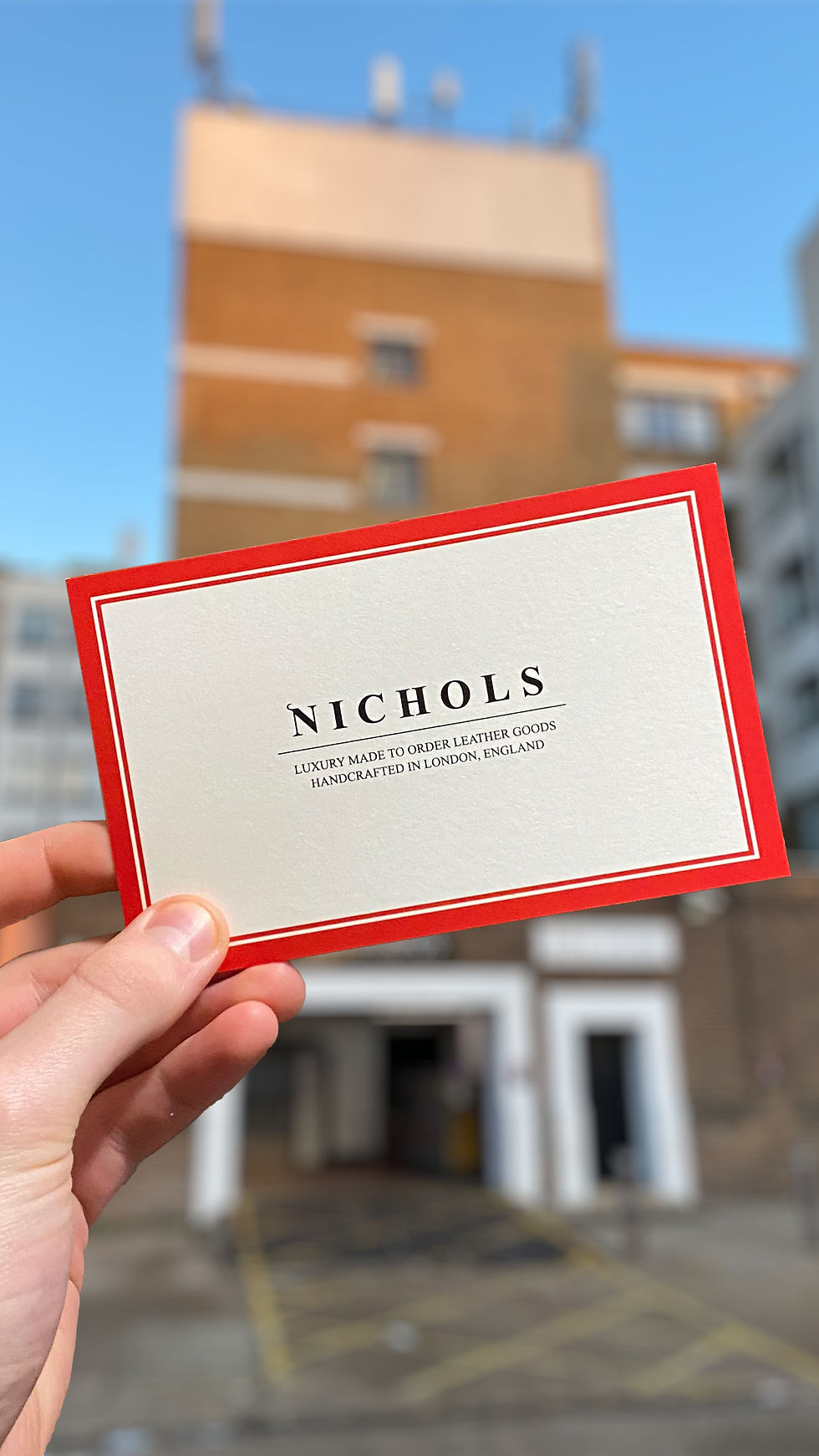Nothing Beats Leather
- Milosz Lech
- Jun 23, 2023
- 4 min read
Replacing leather has been attempted many times by many different industries but they've never been entirely successful.
There are countless problems caused by producing most leather 'alternatives', from creating materials that can not be recycled or that take half a millennium to decompose, to destroying the very nature it is claimed to protect. Real leather, on the other hand, is a natural substance that can biodegrade within a much shorter timespan and this is just one of the reasons why you should stay away from the fake stuff.
In this read, I will focus on the lesser-discussed reasons why nothing beats leather, including themes of practicality, sustainability, and leatherworking.
Buy a pair of boots made of top-quality cow leather and they'll last your lifetime. Buy the same style of boot made of a polyurethane-based 'alternative' and they'll only last half a decade if you're lucky.

Practicality
All different kinds of natural animal leather are known for their durability and with a solid pair of leather boots, you can perform with the ultimate comfort. Although this comfort usually comes after a tough break-in period, it beats having your synthetic boots break just months after purchasing them. Forget about the alternatives that crack and peel; invest in products such as clothing or accessories that become treasured pieces in your wardrobe.

You can find that some of these 'alternatives' do actually have some benefits, despite not overruling the original material which is real leather. For example, some PU-based faux leathers can have resistance to stains, however, at the same time, a scratch will permanently damage the plastic material. These days it can be difficult to tell apart the fake stuff from the real as manufacturers have developed the textures of their materials to closer match the natural aesthetic of actual leather, however, it can be quickly authenticated within a few simple steps, such as smell, feel, and look. Real leather smells organic, natural, and perhaps a little salty without any hint of plastic. It does not feel perfectly smooth; It can wrinkle just like skin. Lastly, it does not look 100% perfect. The surfaces of synthetic 'alternatives' on the other hand look extremely uniform. If you see repeating patterns, as if they were imprinted on the material, chances are very high that the material is just a cheap imitation.
Comfort is a huge priority in footwear but how does leather fit into this?
Over time, and after multiple wears, you notice that your real leather shoes or boots fit like a glove and this is because they have the ability to stretch. The uppers of each shoe practically mould to the shape of your individual feet. On the other hand, the same style of shoe or boot with uppers consisting of 'alternative' plastic-based materials will almost always feel as if they need to be broken in, no matter how often you wear them.
Sustainable
Walk into a vintage clothing store and you'll find a rack of leather jackets that were made 50 years ago. The thing is, your children won't find any vintage polyurethane-based 'leather' jackets hung up inside a retro clothing shop in 2073. These cheap jackets only end up in landfill, only damaging our already-polluted world.
An actual sustainable alternative to animal leather is the developing 'leather' made from the waste of the apple juice and compote industry, giving apple farmers a secondary income. Considering cattle ranchers may opt to burn, instead of use, the cowhides left from harvesting the animals, cowhides can be thought of as a biproduct of the meat industry and also a secondary income for these farmers.

Having a healthy ecosystem is paramount for our nature and sometimes this means controlling wildlife populations, especially those of invasive species. This control of wildlife populations and advantageous culling of animals can be even more beneficial when these animals' hides can be treated into beautiful leather. The Burmese python runs rampant throughout Florida and this has been terrible for native animals such as foxes, raccoons, for example. Since 2017, registered snake hunters in Florida have been making money eliminating these pythons while craftspeople worldwide have been turning their leather into valuable pieces.
Thinking of Goodyear-welted footwear, cobblers can easily replace your veg-tan outsoles and revitalize your shoe or boot uppers with a simple brush, wash and polish. This extends the lifetime of your footwear, something that can't be achieved with most vegan variants.
Leatherworking
It's a beautiful thing being able to pass down your leather goods to your children or grandchildren or perhaps you've made a small accessory for somebody you appreciate very much as you know they'll also be able to cherish them for the rest of their lives.

You know, when it comes to leather goods, real leather will stand the test of time and will develop a beautiful patina entirely unique to you and the way you go about life. You don't get these kinds of results with leather 'alternatives'.

Lastly, you may find that you can't cut through polyurethane 'leathers' as easily as veg-tan leather due to the synthetic backing of the materials which your knife can get caught on, leading to unattractive frayed edges.

If you enjoyed reading about leather, maybe check out my leatherwork portfolio here!



Comments